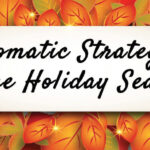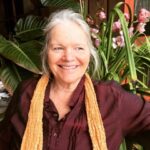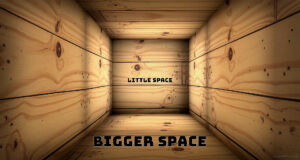

by Ann Todhunter Brode
Our ideas of how the holidays should go can be a sticky combination of tradition, experience, marketing, and . . . fiction. Year after year I see my clients reflect the stresses of the season as old issues surface and old patterns take hold. Just around the corner from Halloween, the body starts to brace for the inevitable and resiliency disappears. Conflicting feelings of anticipation and anxiety show up in the body as a tangle of shoulder-neck-jaw tension, low back pain, random injuries, and general uptightness. In order to extend the good work beyond our ninety- minute session, I’ve developed a simple somatic strategy to change the holiday dynamic.
Whether being social with friends or colleagues, gathering with family, or negotiating the consumer onslaught, it’s easy to get triggered by old issues and unreasonable expectations. The physical body reflects this by getting uptight. When this happens our body space feels smaller, tighter, denser. By contrast, when we’re at ease, our body space feels bigger, softer and lighter. Being conscious of this small space-big space differential is a good way to stay calm, centered, and present when everything else feels out of control. During a session, I encourage clients to notice how tightening and releasing the muscles effects not just their sense of ease but their attitude and experience as well.
Try this out. To feel the impact of the small space versus big space, suck in your stomach and imagine a future activity or encounter with a family member. Gage the degree of tension, receptivity, optimism, and enthusiasm in this small space. Then, let go to see how big space changes your outlook. Often, clients report that letting go not only expands their relative ease and self-confidence but broadens their perspective to include compassion and acceptance. Perhaps, being in big space helps you see the big picture.
Paying attention to the small space- big space differential can change your  experience and help you relax and enjoy this special time of year. Instead of tightening up and holding on, why not let go and see what happens? Good times to practice letting go and getting big are before, during and after an event. Here’s how it might look:
experience and help you relax and enjoy this special time of year. Instead of tightening up and holding on, why not let go and see what happens? Good times to practice letting go and getting big are before, during and after an event. Here’s how it might look:
Beforehand. In anticipation of a gathering or event, tune in to what’s happening in your body. Slow down the pace and scale down the tension. Notice any places in your body that hold tension and let them soften without giving them a story. Let your breath fill and empty internal space. Expanding your awareness to external space, notice the quality of light, weather, and surrounding sounds. Bring this sense of unencumbered big space with you.
During. Every once in a while, check in with your spacious body to feel what’s happening. In big space it’s easy to notice, savor, and appreciate the best of the season. If you encounter a moment of discord and get small, just expand your body space and move on. Remember: small space is holding on; big space is letting go. Even, if you bump into the same old story, don’t expect the same old results. When your intention is to let go and get big, the dynamic has shifted. Now there’s space for something new.
Afterwards. When you leave the gathering, do a body check. Is your breath easy and full? Is your body free-flowing or is it encumbered and heavy? Even if you’re tired, do you feel nurtured and full or spent and depleted? When you get home, take a few moments to return to your expansive, spatial self. Move your limbs around a bit, take a fresh breath, make some sounds on the exhale, and imagine all negativity floating away. Now, your big self is ready to drift off to sleep.
Paying attention to the body is a straight forward way to notice what’s happening, change the program, and show up for the season. The clarity of tension versus relaxation, dullness versus awareness, and ease versus difficulty avoids the complexity of who said what and where it all went wrong. Directing awareness to the basic small space-big space experience is a good way to by-pass a chattering mind and assuage ruffled emotions. When big space is the reference point, there’s plenty of room for the beauty, magic and mystery of the season.
Ann Todhunter Brode has been an Aston Patterning practitioner and body-oriented therapist in Santa Barbara for over forty years. A recognized master in her field, she is dedicated to helping people understand and feel comfortable in their bodies. In addition to her clinical practice, Brode shares her personal and professional experience through down-to-earth, compassionate articles on the challenges & rewards of living consciously in the body. Look for her book, A Guide to Body Wisdom- What Your Mind Needs to Know About Your Body (Llewellyn Worldwide) online and in bookstores.







